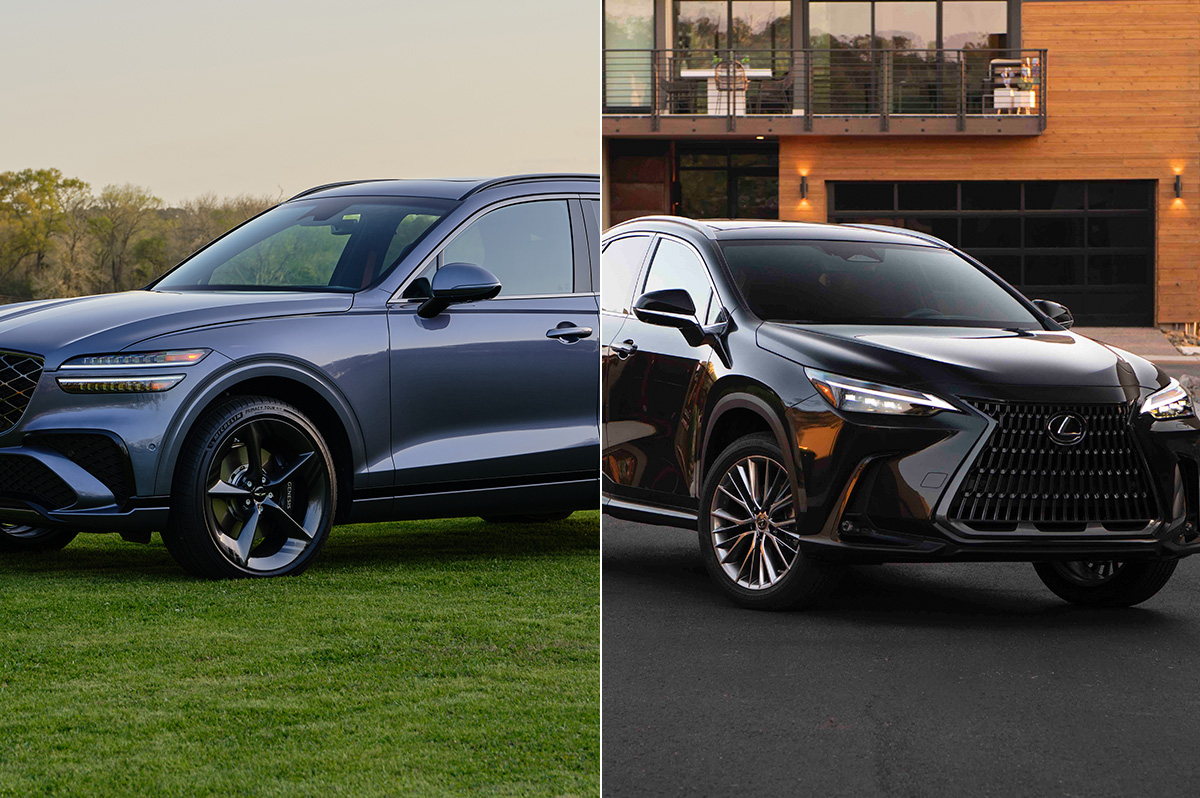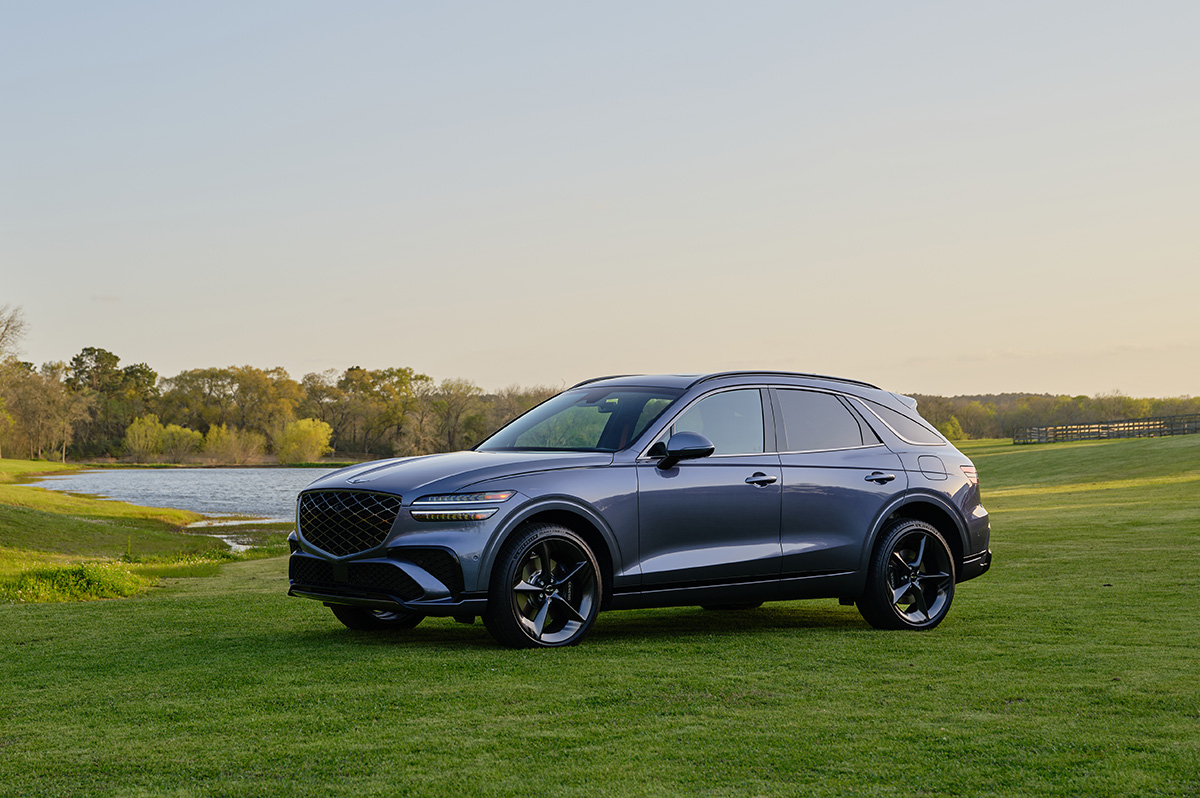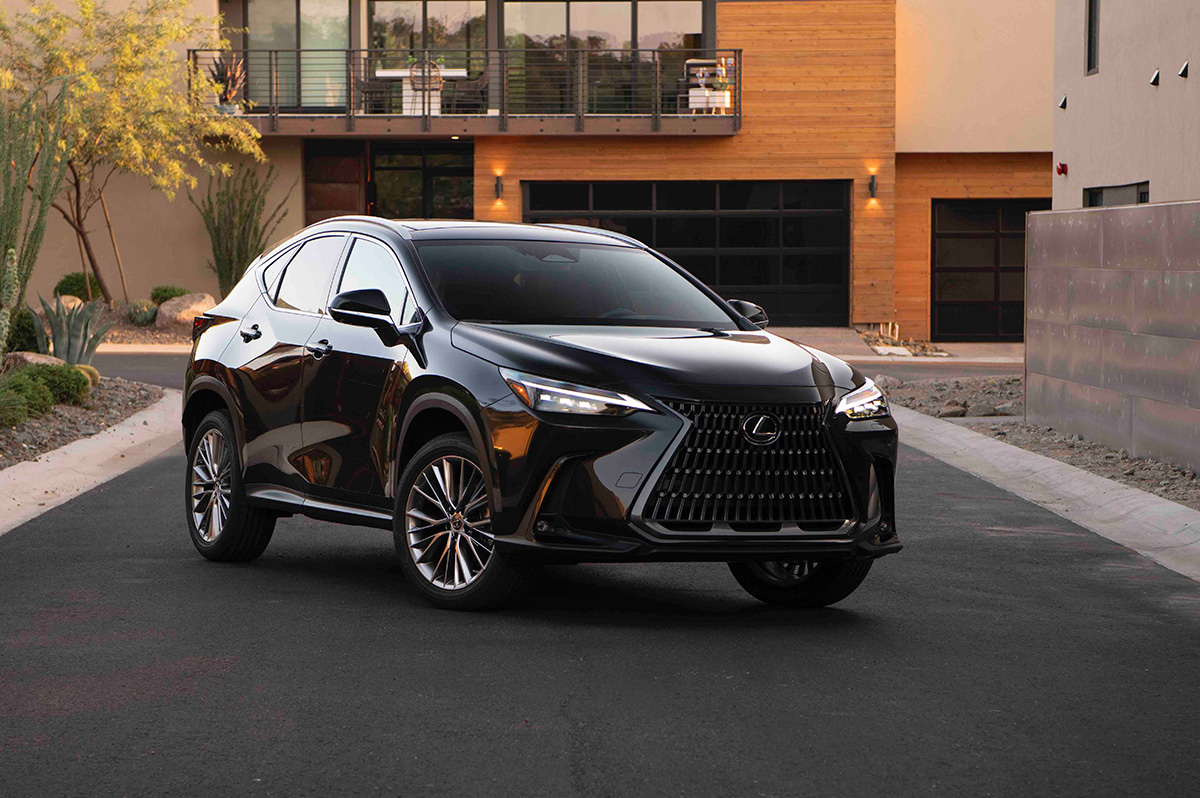Living
From Russia with love
Dance diva Sasha Gradiva on fame, gays and guns


Electronic dance diva Sasha Gradiva plays the Capital Pride Capitol Stage Sunday at about 6:50 p.m. (Photo courtesy Saadko Records)
The main stage at Capital Pride is always an eclectic setting for all kinds of talent — from local legends to up-and-comers to household names. Although not technically considered one of the headliners — that honor is being shared jointly by Icona Pop, Cher Lloyd and Emeli Sande — Russian-born diva Sasha Gradiva, slated to go on at 6:51 p.m., has one of the envious culminating slots (for a full list of scheduled performance times, visit capitalpride.org).
Gradiva is starting to make a name for herself in the world of electronic dance music with songs like “I’m on Fire,” “Wanted” (No. 3 on Billboard’s Hot Dance Singles chart) and “Say My Name with Love, working often with producer Tricky Stewart (Rihanna’s “Umbrella” and Beyonce’s “Single Ladies”).
Sasha Gradiva, “I’m on Fire”
In near-perfect English yet with a noticeable Russian accent, Gradiva, 28, took a half hour with us by phone on Memorial Day from her home in Los Angeles in which she discussed everything from her career, her reasons for leaving a successful music career in her homeland and why she got kicked out of the Grammys for attaching rifles to her dress last year. Her comments have been slightly edited for length.
Washington Blade: How are you spending the holiday?
Sasha Gradiva: I’m with some friends here in L.A. trying to figure out how we’re going to spend the day.
Blade: You live in L.A., right?
Gradiva: Yes, but I travel madly so I don’t get to spend much time here.
Blade: On average, how much are you home vs. on the road?
Gradiva: I’m probably gone about 70 percent of the time. I’ll be out for three weeks, then back a week, then maybe out another four.
Blade: What are you doing musically these days?
Gradiva: I am working most often on new music. Writing and recording and getting a new show together, which I’m very involved in personally. Every single stage of the show. I pay a lot of attention to costume and sets and the videos that play on the screen behind me. My shows are very important and I’m making sure everything is exactly the way I want it.
Blade: Do you record mostly in L.A. or elsewhere?
Gradiva: Mostly in L.A. My single “Come With Us” is coming out very, very soon. We’re literally putting the finishing touches on the campaign right now and working on the final mix. It’s a very detailed process. I was performing a remixed version of it on my tour last year and got really amazing responses. People really love the track.
Blade: Will this be on an album, an EP or just a single release?
Gradiva: It’s part of an EP, which we’re hoping to release closer to August. I have maybe like 20 songs ready to record and that’s what I’m focusing on while I’m here in L.A. There are a lot of producers in Tricky’s camp I’m very lucky to get introduced to so we’re trying to find something new. I’m working really hard to create something new that hasn’t been done before.
Blade: So often in electronic dance music, the producers get much of the credit while some pop stars — not all certainly — are seen as the outlet but not really the visionary, more so than in other genres perhaps. Does that dynamic bother you?
Gradiva: No, because I’m very involved. My songs are really born out of guitar or I’ll go to the studio and produce something basic on guitar myself or play my songs on the piano. I’m very involved, though. I pay attention to every lyric. I want something deep, meaningful and universal. I love the process — creating and perfecting.

Sasha Gradiva says she left a successful music career in Russia because she’d never have worldwide impact unless she broadened her fan base into English-speaking countries. (Photo courtesy Saadko Records)
Blade: Creating an image as a dance artist is so essential but is there ever a clash between being perhaps aloof or mysterious for a photo shoot or in a video or even on stage, but then in interviews or with social media presenting yourself to fans as a real person who eats, sleeps, shops, etc. like everyone else? Does one diminish the other?
Gradiva: I don’t find it hard at all to be down to earth or to talk to fans. I totally say no because I think perception of art and show business has changed tremendously since maybe like 10 years ago and I literally feel that there’s (in embracing) all the new things with social media and the internet, it broadens your reach in a lot of ways but at the same time, there’s some anxiety because there’s no curtain anymore. Even when you have nothing left to give. People can see through it all now and they’ll know exactly who you are. They see your Tweets and your pictures and this wall is dissolved. It’s good but it’s challenging at the same time. The solution for this is just to relax and be available and be yourself and this will be the best protection from anxiety that you could have. We’ve chosen this path to be in front of many people and we commit to sharing our life and vision with them. It’s an important gift, not a curse.
Blade: But did the old system allow celebrities to have more mystique?
Gradiva: The entire machine was working differently back then. Now that’s just impossible. If you’re going to be behind the curtain, you’re going to stay behind the curtain. You need to be accessible and available and share everything with fans. That’s why you’ll be a successful artist, not because you hide something. It might be more difficult for the artists to deal with, but it’s more honest. If an artist is dumb, fans will know right away. Of if you’re not genuine, they’ll pick up on that. It’s a little bit brutal but it’s honest and I prefer honesty.
Blade: You got a lot of press buzz for the guns you wore to the Grammys last year. When the dust settled, do you feel the message you wanted to convey came across or was there some sense you’d become simply “the girl in the gun dress.”
Gradiva: I definitely got a lot of attention, which I didn’t expect from the peace movement and the anti-violence movement. I meant it as a political statement if you will for people to pay attention to how much energy and money and sources the world spends on useless things. The most horrible things in the world are wars and producing weapons and drugs and when you think about how many things people could use this money for that would be so much better, people aren’t even curious to hear the research that’s been done on this which is very much available by the way. Our society just seems not to be there spiritually yet to address that. That was my attempt and we got good results. I want to do more socially to make the world a better place because I think that’s exactly what we’re supposed to do, not just sing and have fun.
Blade: Are you straight?
Gradiva: At the present time, yes.
Blade: How did you end up playing Pride events? Is it just a logical fit considering the kind of music you make or do you have some personal investment in the community?
Gradiva: I feel very connected to my gay audience. I guess it’s a destiny. The gay audience has been the first ones to support my music. And it saddens me that in my native country, in Russia, they don’t allow gay Pride. I will be fighting as much as I can for gay rights. It’s definitely something that touches me a lot.
Blade: You had released a few albums in Russia and seemed to be on your way with a music career there. Why did you uproot and move to the U.S.?
Gradiva: All the music that inspired me growing up was from America and Europe — people like Michael Jackson, Cyndi Lauper, Depeche Mode — and I always wanted bigger stages, to travel the world. I’d had two albums that were very successful but at some point while I was still young I just thought, “Well, I want to move and do this — it will either be in this lifetime or in the next, so I decided to do it in this lifetime.” My friends and colleagues thought I was completely out of my mind because it was not logical at all, but this is what I’ve done and the reaction in America so far has been so rewarding. It actually makes me cry, it’s really touching.

Did you melt like the Wicked Witch of the West this week?
As summer temperatures rise, keeping your home or apartment cool during a heat wave can become both a comfort issue and a financial challenge. One of the most effective ways to keep a home cool is to prevent heat from entering in the first place. Sunlight streaming through windows can significantly raise indoor temperatures. Consider the following solutions:
• Close blinds or curtains during the hottest parts of the day. Blackout curtains or thermal drapes can reduce heat gain by up to 30%.
• Install reflective window films to block UV rays and reduce solar heat without sacrificing natural light.
• Use outdoor shading solutions such as awnings (yes, the ones you removed because they were “dated”) and shutters to limit direct sunlight.
Fans are a cost-effective way to circulate air and create a wind-chill effect that makes rooms feel cooler.
• Ceiling fans should rotate counterclockwise in the summer to push cool air down.
• Box fans or oscillating fans can be placed near windows to pull in cooler evening air or push hot air out.
• Create a cross-breeze by opening windows on opposite sides of your home and positioning fans to direct airflow through the space.
• For an extra cooling effect, place a bowl of ice or a frozen water bottle in front of a fan to circulate chilled air.
To optimize natural ventilation, open windows early in the morning or late in the evening when outdoor temperatures drop. This allows cooler air to flow in and helps ventilate heat that built up during the day.
Appliances and electronics generate a surprising amount of heat. To reduce indoor temperatures:
• Avoid using the oven or stove during the day; opt for no-cook meals, microwave cooking, or grilling outside.
• Run heat-producing appliances like dishwashers and clothes dryers in the early morning or late evening.
• Unplug electronics when not in use, as even standby power can add heat to your space.
• Switching to energy-efficient LED lightbulbs can also reduce ambient heat compared to incandescent lighting.
If you do use an air conditioner, maximize its effectiveness by:
• Setting it to a reasonable temperature—around 76–78°F when you’re home and higher when you’re away.
• Cleaning or replacing filters regularly to maintain airflow and efficiency.
• Sealing gaps around doors and windows to prevent cool air from escaping. (Didn’t we all have a parent who said, “Close the door. You’re letting all the cool out?”)
• Using a programmable thermostat to optimize cooling schedules and reduce energy use.
If it is not cost-prohibitive, adding insulation in attics and walls can greatly reduce heat transfer. Solar panels that reflect heat can also help, as well as offset the cost of their installation. Adding weatherstripping around doors and windows, sealing cracks, and using door sweeps can make a significant difference in keeping heat out and cool air in.
Natural and eco-conscious methods can also help cool your home.
• Snake plants, ferns, or rubber trees can improve air quality and slightly cool the air through transpiration.
• White or reflective roof paint can reduce roof temperatures significantly.
• Cooling mats or bedding can make sleeping more comfortable without cranking up the A/C.
For renters or those who can’t make permanent modifications, there are still plenty of ways to keep cool.
• Use portable fans and A/C units instead of built-in systems, making sure they are the correct size for your space.
• Removable window film or static cling tinting can reflect heat without violating your lease.
• Install tension rod curtains or temporary blackout panels instead of hardware-mounted window coverings.
• Add draft blockers and weatherstripping tape that can be applied and removed without damage.
• Cover floors with light-colored rugs to reflect heat rather than absorb it.
• If allowed, use temporary adhesive hooks to hang reflective materials or light-filtering fabrics over windows.
Even if your space is warm, you can still take steps to help your body stay cool.
• Wear light, breathable fabrics like cotton or linen.
• Stay hydrated and avoid caffeine or alcohol during peak heat hours.
• Take cool showers or use damp cloths on your neck and wrists to bring your body temperature down.
Keeping your home or apartment cool in the summer doesn’t have to be expensive or energy-intensive. With a few adjustments such as blocking sunlight, optimizing airflow, using fans effectively, and making renter-friendly upgrades, you can create a more comfortable indoor environment while keeping energy bills in check.
Valerie M. Blake is a licensed Associate Broker in D.C., Maryland, and Virginia with RLAH @properties. Call or text her at 202-246-8602, email her at DCHomeQuest.com, or follow her on Facebook at TheRealst8ofAffairs.
Real Estate
The world’s on fire and D.C. is on sale (sort of)
Prices are up, but then again, nothing makes sense anymore

ICE is disappearing people, revered government agencies are shuttering, and who knows if we’ll be in World War III next week? But can you believe prices in D.C. are actually still up 6.3% since last year? It doesn’t make sense, and perhaps that does make sense, because nothing seems to make any sense any more.
That said, there are some parts of our market that are truly suffering. The interest rates, which have been up, up, up for about four years now, are the ongoing rain on our market’s military parade. Combine that with 75,000 federal employees taking a buyout nationwide, and DOGE cuts eliminating around 40,000 federal jobs in the District (per estimates by the D.C. CFO), not to mention thousands of other job losses in non-governmental organizations due to funding and program cuts, and you’ve got a case of uncertainty, and downright unaffordability in the pool of otherwise would-be buyers.
This has had a marked impact on properties that starter-home buyers and low- to mid-level employees would otherwise buy, most notably condominium and cooperative apartment units. These properties have already slowed in our market thanks to the profound impact that higher interest rates have had on their monthly carrying costs—pair that with job insecurity, and a lot of condos are proving to be very difficult to sell indeed.
So how is the average sale price up in our market?
The increase is almost entirely due to the resounding strength of the single-family home market, especially in upper Northwest D.C., where it is still quite common to see bidding wars, even on properties pushing past the $3M mark. It seems that buyers in that echelon are less impacted by a few percentage points in the interest rate, and less concerned about their job security. Notably, those buyers are often married with children and have an absolute need for more space, must stay in the area due to one spouse’s job, or the kid’s friend group, regardless of whether the cost of owning is thousands of dollars more per month than it would have been in 2020 or 2021. The continued appreciation in these neighborhoods defies imagination.
So, what to do if you are not one of those lucky enough to be shopping for a $3M home? The short answer: wait. If you want more space, rent your current place out and learn the joys of being a landlord while someone else pays your mortgage. Need the equity from your current home to buy your next place? Get a home equity line of credit, or loan, and pull the equity out of your current place to buy the next one. Or—and I have never recommended this before in 21 years of being a Realtor—rent for a few years. Sure, I’d love to list and sell your condo so you can climb the real estate ladder, but it might just be a waste of time, money or both if you could just ride out this storm and sell in a DOGE-less future.
All this said, there are some condos that seem to be immune from this recent negative news. Anecdotally, it feels like it’s the truly special ones that do just fine no matter the market. Our recent listing in Capitol Hill had a view from every one of its 15 windows of the Supreme Court. Sold in five days with six offers. Another condo was on the top two floors of a townhouse and had the coolest black wood floors that gleamed like a grand piano. Sold in four days at full price.
So, all is not for naught if you have a condo or home in an area that people want to be in, with nice space, light, amenities and a certain je ne sais quois. And, as long as we have a democracy in a few years, my experience says our market will be back, stronger than ever, really soon.
David Bediz is a Realtor and mortgage loan broker for the Bediz Group LLC and Home Starts Here, LLC. Reach him at [email protected].

In this corner, there’s the Genesis QV70, newly updated and full of glitzy gizmos. And in the opposing corner, there’s the Lexus NX, a fan fave known for comfort and reliability.
Both are strong contenders. Both have proven to be equally adept at bobbing and weaving through traffic. And both can go toe to toe with pricier competitors.
And yet, what would happen when they sparred against each other? Here’s your ringside seat to find out.
GENESIS QV70

$50,000
MPG: 22 city/28 highway
0 to 60 mph: 5.9 seconds
Cargo space: 28.9 cu. ft.
PROS: Stylish. Good value. Lots of standard amenities.
CONS: So-so fuel economy. Quirky dash controls.
IN A NUTSHELL: When it comes to speed, the Genesis QV70 is faster on its feet than the Lexus NX. Neither of these crossover SUVs is a lightweight, but the QV70 offers more potent powerplants—including an all-electric version that zips from 0 to 60 mph in just 3.8 seconds. In other words, Porsche Macan S territory.
The two gas-powered options—a four-cylinder turbo and twin-turbo V6—also got my blood pumping. So did the velvetlike suspension mixed with deft handling and stop-on-a-dime braking. But this adrenaline rush comes at a cost: sacrificing fuel economy.
As for the automaker’s design philosophy—“athletic elegance”—it’s on full display here: an oversized grille inspired by the Genesis emblem, the dramatically arcing silhouette, and those distinct quad headlights and taillights. It’s not easy to stand out when 25% of all vehicles sold in the U.S. are compact crossovers, so kudos to the QV70 for being such a head-turner.
The mod-yet-minimalist styling carries over to the cabin, with its high-quality materials: real-wood accents, soft-touch plastics and a tasteful glass shift knob. New this year is a sweeping 27-inch dashboard monitor, which houses the gauge cluster and infotainment touchscreen. Alas, this display is positioned a bit far from the driver (though I must admit reaching for it did help stretch a few tight back muscles).
Instead of being a costly extra, this gigantic monitor comes standard. So do synthetic leathers seats, nine-speaker stereo, smartphone/wireless connectivity, hands-free liftgate, tons of safety gear and more. Options include a panoramic sunroof, three-zone climate control, 16-speaker Bang & Olufsen audio, synthetic suede headliner, sound-reducing rear windows, automated parking and other goodies.
What’s the score so far? Despite some minor quibbles, the Genesis QV70 is a worthy challenger that pulls no punches.
LEXUS NX

$43,000
MPG: 26 city/33 highway
0 to 60 mph: 8.2 seconds
Cargo space: 22.7 cu. ft.
PROS: Fuel efficient. Comfy seats. Rock-solid reliability.
CONS: Pokey base model. Limited rear storage.
IN A NUTSHELL: Sure, the Lexus NX isn’t as speedy as the Genesis QV70. But, as with the tortoise and the hare, sometimes slow and steady wins the race. And really, it’s only the entry-level NX that feels sluggish, such as when trying to quickly merge into freeway traffic.
Other trim levels, including two hybrid options, are just fine. And no matter the engine choice, the counterpunch here is that these vehicles get better gas mileage: 20% higher fuel economy than in either the four-cylinder or V6 in the Genesis. The two NX hybrids are even more green, with the high-end plug-in version able to travel up to 37 miles on electric power alone. One downside: There is no all-electric NX—well, at least not yet.
As with parent-company Toyota, Lexus offers stellar vehicle reliability—often ranked No. 1 in dependability and crash-test surveys year after year. Lexus vehicles generally hold their value better than Genesis, because this newer brand has a shorter history. Lexus also has a larger dealer network, though the number of Genesis dealerships is growing.
But when it comes to cargo space, the NX is about two inches shorter and narrower than the QV70, which has more stowage area. And Genesis handling is sportier, though the Lexus feels sure and well-grounded.
Luxe interior amenities are basically the same in both vehicles. But interior styling in the QV70 is trendy, while the NX is more understated. In other words, a choice between sassy and classy.
This is a very competitive vehicle segment, with Euro models like the Audi Q5, BMW X3 and Mercedes GLC also duking it out in what seems like a clash of the titans.
But as for the Genesis QX70 or Lexus NX, which is the winner? For me, both are real knockouts—so I’d call it a draw.
-

 U.S. Supreme Court4 days ago
U.S. Supreme Court4 days agoSupreme Court upholds ACA rule that makes PrEP, other preventative care free
-

 U.S. Supreme Court4 days ago
U.S. Supreme Court4 days agoSupreme Court rules parents must have option to opt children out of LGBTQ-specific lessons
-

 National5 days ago
National5 days agoEvan Wolfson on the 10-year legacy of marriage equality
-

 Congress5 days ago
Congress5 days agoSenate parliamentarian orders removal of gender-affirming care ban from GOP reconciliation bill












